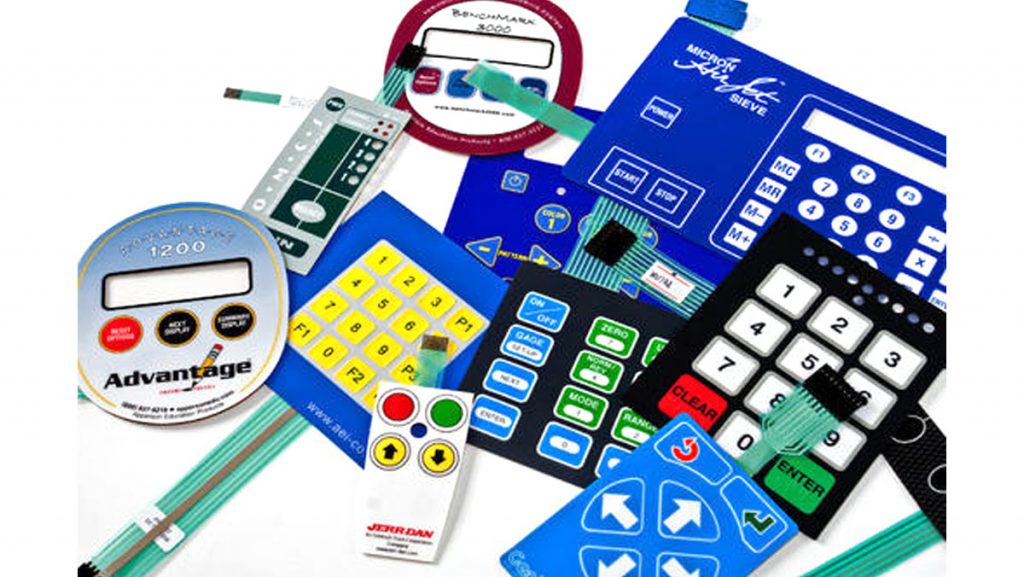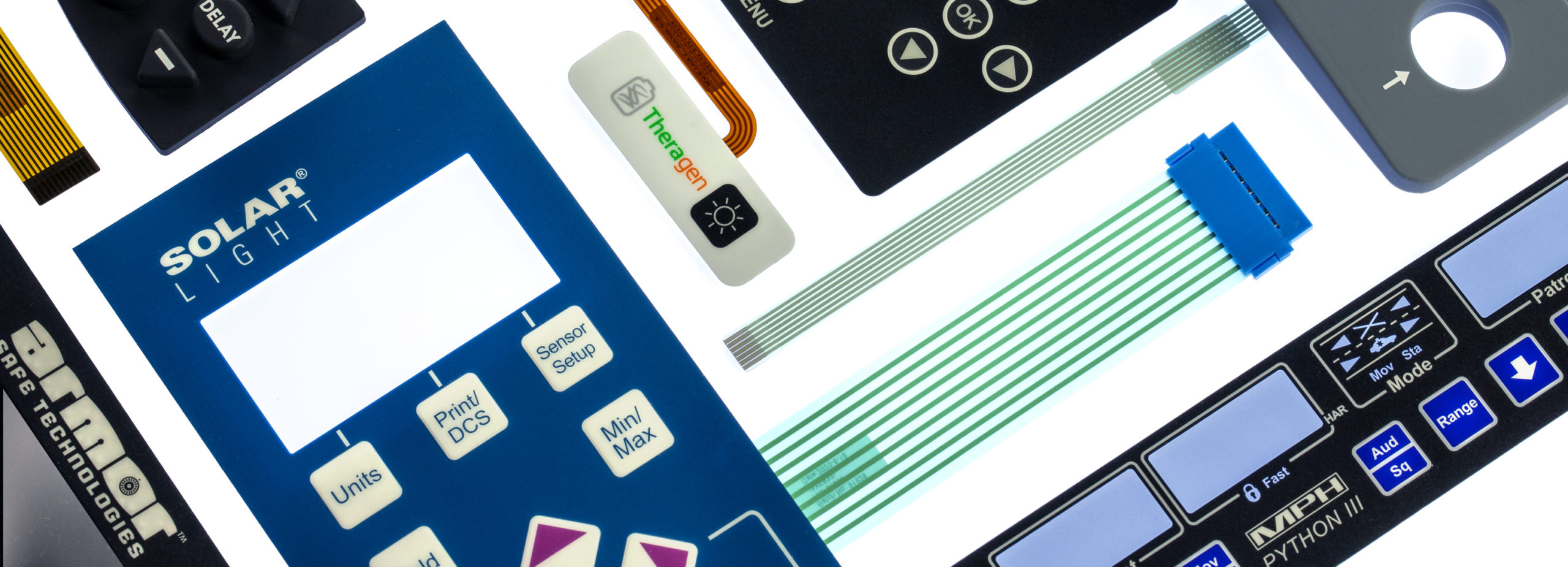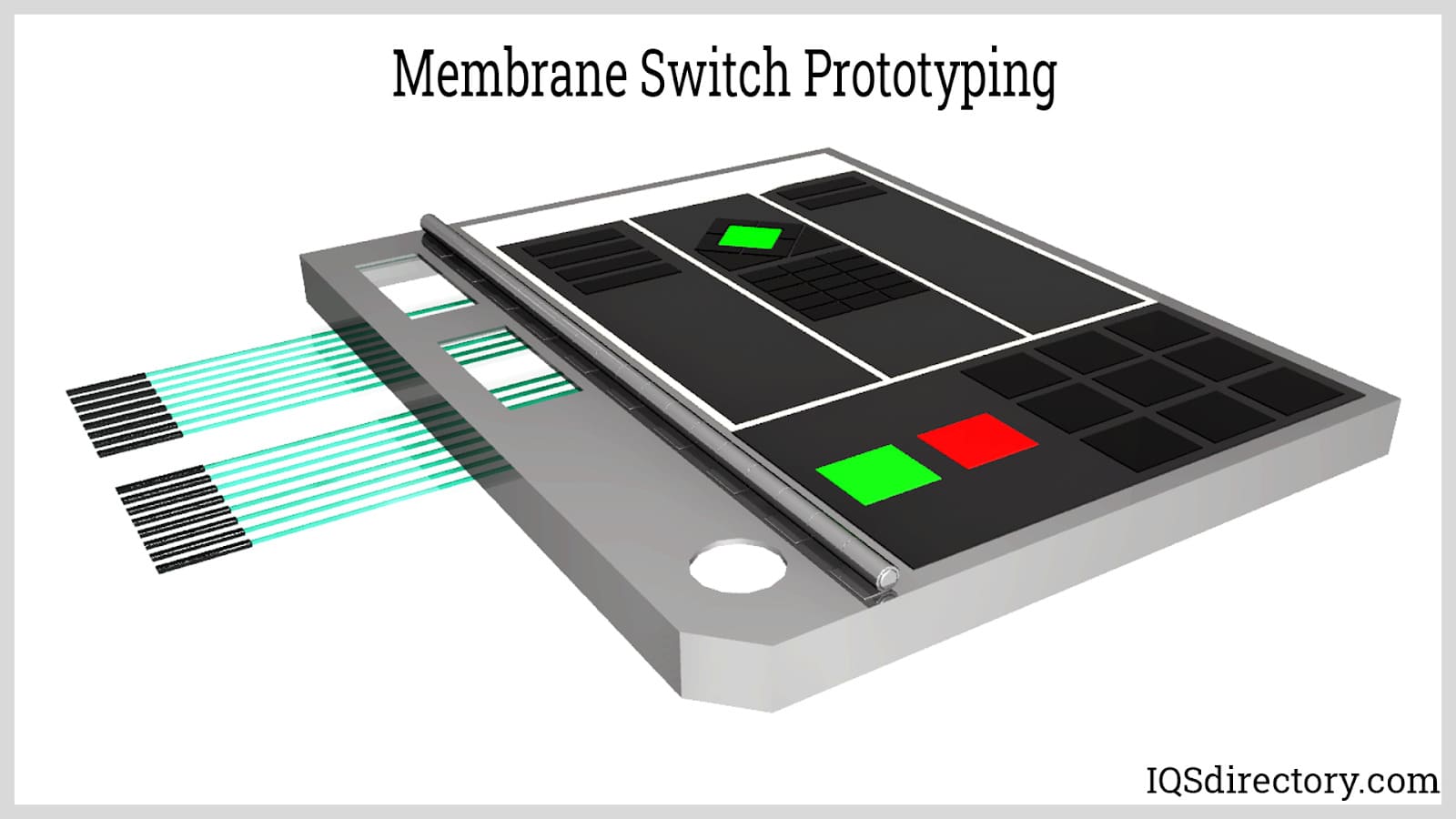Why Membrane Switches Are Gaining Popularity in the Automotive Industry
Recognizing the Importance of Membrane Switches in User User Interfaces
Membrane buttons are essential parts in the layout of effective interface, assisting in not only performance yet additionally enhancing visual allure and individual communication. Their one-of-a-kind functions, such as resistance to personalized designs and ecological aspects, make them appropriate for a diverse range of applications throughout several industries. As we explore the future fads and different benefits connected with Membrane innovation, it ends up being clear that these buttons are much more than just parts; they stand for a merging of development and functionality. The implications of this innovation on individual experience deserve examining even more.
What Are Membrane Buttons?

The spacer layer, which contains sticky properties, enables the splitting up of the circuit layer from the overlay, ensuring that the button continues to be in a non-activated state until pressed. When stress is applied to the overlay, it compresses the spacer layer, linking the void and completing the circuit in the underlying layer. This design not just reduces the physical area required for conventional mechanical switches yet additionally boosts the longevity of the tool, as Membrane switches are normally immune to dust, wetness, and other environmental elements.
Typically found in applications varying from customer electronics to medical devices, Membrane buttons are essential to modern technology, providing a user-friendly and reliable interface that lines up with modern design demands.
Advantages of Membrane Switches
While countless button innovations exist, Membrane Switches deal distinct benefits that make them especially preferable in numerous applications. One of the key benefits of Membrane switches is their portable design, which allows for space-saving implementations in gadgets where property is limited. Their thin account not just enhances visual allure but also promotes lightweight building and construction.
Another considerable benefit is their resistance to ecological factors. Membrane buttons are generally sealed against wetness, dirt, and pollutants, making them ideal for use popular atmospheres, such as clinical gadgets and commercial tools. This resilience extends the life-span of the switch, lowering maintenance prices and improving reliability.
In addition, Membrane buttons can be customized to meet specific layout needs, incorporating one-of-a-kind graphics and shades that enhance individual interaction. Their responsive feedback alternatives can additionally be customized to provide a rewarding individual experience. Additionally, Membrane switches are affordable, specifically in high-volume applications, as they can be produced efficiently.
Applications in Various Industries

In the consumer electronic devices industry, Membrane switches are prevalent in devices such as microwaves, washing devices, and remotes. Their tactile responses and aesthetic choices improve individual experience while supplying a streamlined, contemporary appearance. In addition, auto suppliers utilize Membrane switches in dashboard controls and infomercial systems, where space is limited, and user engagement is essential.
Additionally, the commercial sector leverages Membrane buttons in control panels for machinery and tools, enabling intuitive operation in usually extreme atmospheres. Their resistance to chemicals and moisture makes sure durability and integrity in these applications. Overall, the flexibility of Membrane Switches contributes substantially to their prevalent use, making them essential in different technical domain names.
Layout Factors To Consider for Membrane Switches

When designing Membrane switches, a number of essential factors to consider should be thought about to make sure ideal performance and customer experience. The selection of materials is essential; choosing durable, premium substratums can boost the switch's long life and resistance to environmental elements such as wetness and temperature level fluctuations.
Second of all, the layout of the visuals overlay ought to focus on clearness and ease of use. Icons and text must be understandable, and the layout must assist in instinctive interaction (membrane switches). Additionally, tactile feedback is important; incorporating a responsive dome or other systems can enhance the customer experience by supplying physical verification of activation
One more vital factor is the button's electrical efficiency. Developers should guarantee that the conductive traces are properly designed to reduce resistance and stay clear of signal disturbance. This entails examining the required actuation force and making sure compatibility with the electronic parts they will interface with.

Future Patterns in Membrane Technology
As innovation continues to advance, Membrane switches are poised to evolve considerably, driven by technologies in materials and producing methods. One emerging trend is the consolidation of sophisticated products, such as adaptable substrates and conductive inks, which boost resilience and reduce the general weight of Membrane switches. These materials not only enhance the responsive response but also enable for the design of switches that can stand up to harsher environmental conditions.
In addition, the assimilation of touch-sensitive technologies is transforming conventional Membrane Switches right into more interactive customer interfaces. Capacitive touch sensing units embedded within Membrane switch panels can offer an extra instinctive and responsive user experience, straightening with the expanding need for sleek, modern styles in consumer electronics.
In addition, innovations in printing techniques, such as electronic and 3D printing, allow fast prototyping and customization of Membrane buttons. This versatility permits makers to react much more quickly to market demands and consumer preferences.
Lastly, sustainability is becoming a substantial focus, with producers checking out environmentally friendly products and processes. As these patterns unfold, the future of Membrane innovation assures enhanced capability, visual appeal, and ecological duty, solidifying their role in innovative interface throughout various industries.
Conclusion
In conclusion, Membrane Switches stand for an important part in the layout of customer interfaces, integrating performance with aesthetic flexibility. As improvements in innovation continue, the development of Membrane buttons is expected to additional fine-tune individual interfaces, driving innovation and improving usability in a progressively intricate technological landscape.
Membrane switches are important parts in the layout of reliable user interfaces, promoting not only functionality yet also boosting aesthetic charm and user interaction.Membrane Switches offer as a vital component in numerous customer interfaces, promoting a seamless communication in between individuals and electronic gadgets.While many switch innovations exist, i loved this Membrane Switches offer distinct advantages that make them particularly desirable in various applications.Additionally, Membrane buttons can be personalized to fulfill specific style requirements, incorporating special graphics and colors that enhance customer communication.In conclusion, Membrane Switches represent an important element in the layout of individual interfaces, incorporating have a peek at this site capability with aesthetic flexibility.